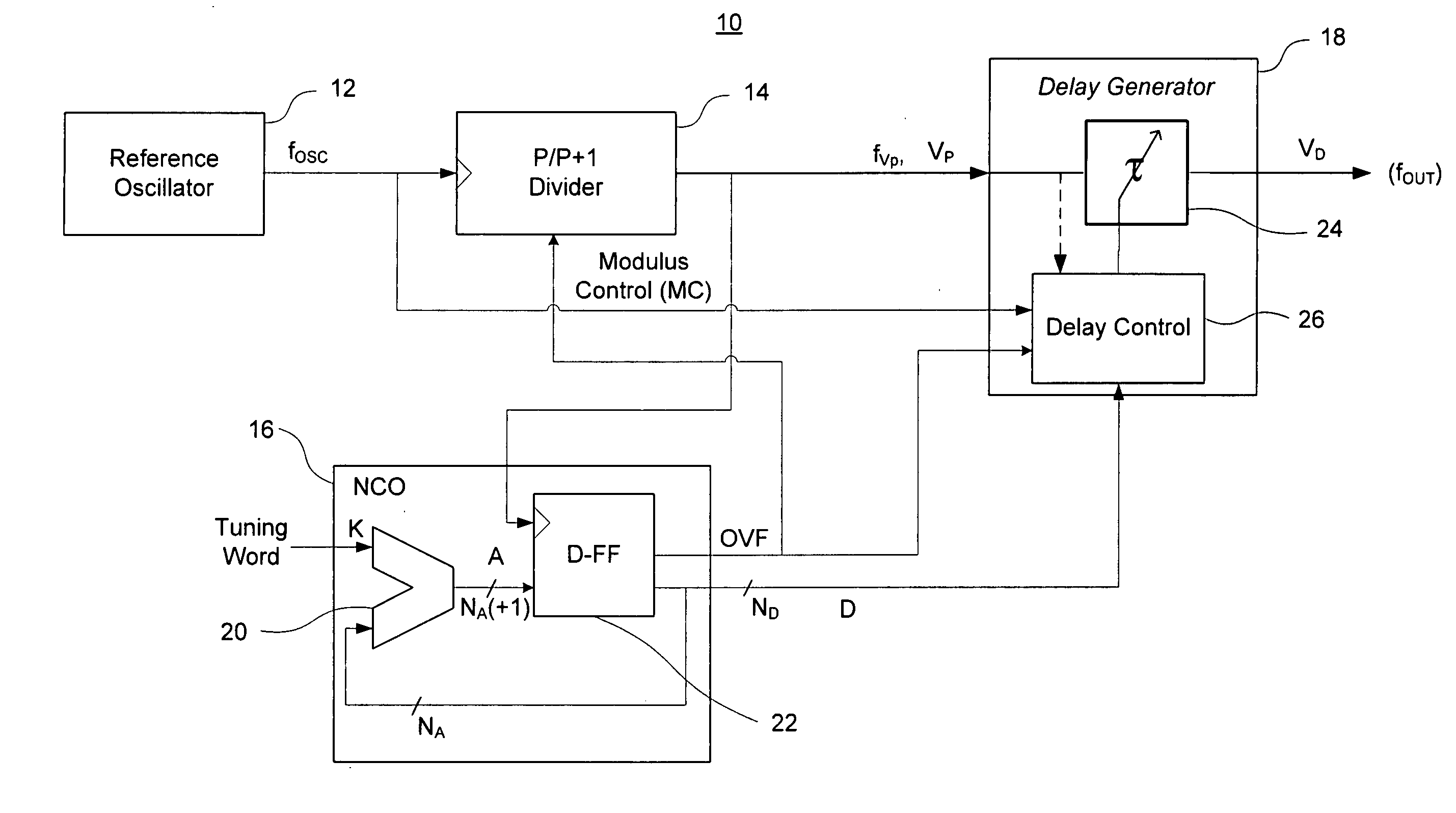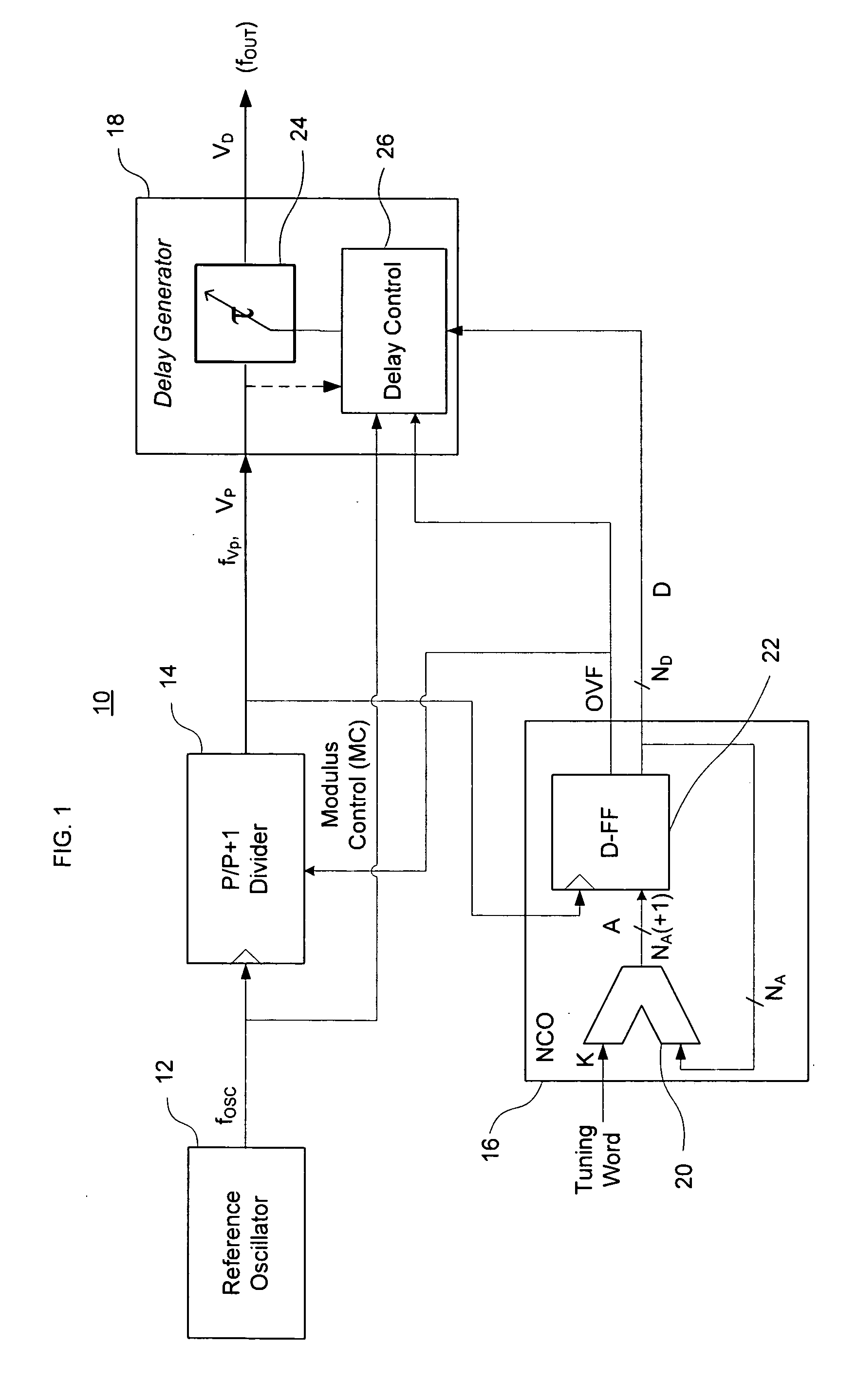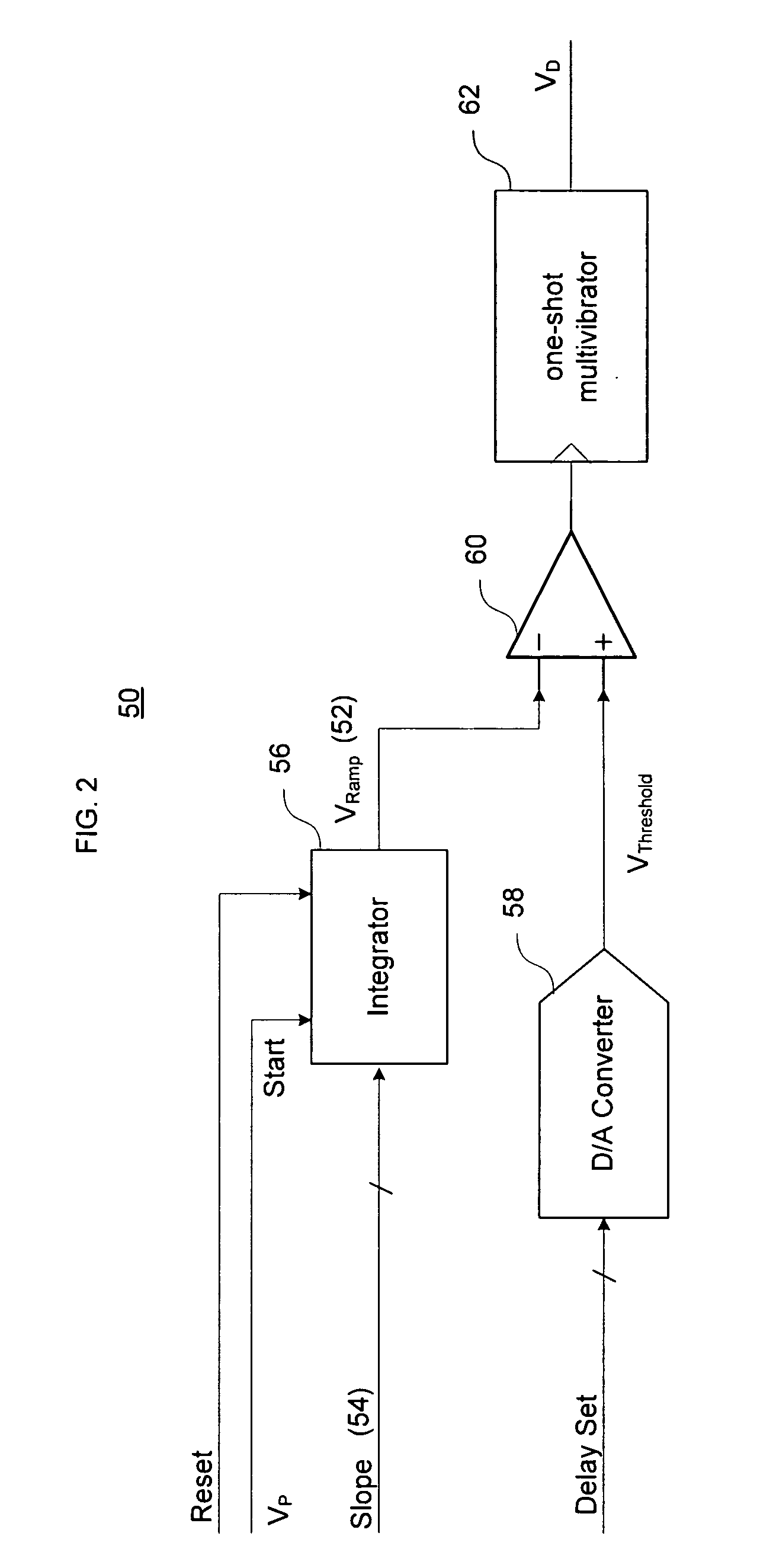Direct digital synthesizer for reference frequency generation
a reference frequency and digital synthesizer technology, applied in oscillator generators, pulse automatic control, instruments, etc., can solve the problems of high-frequency oscillator using non-acoustic resonator technology, inability to achieve the low phase noise or low power consumption required by many applications, and inability to achieve low phase noise and timing jitter performance. , the effect of reducing the overall power consumption
- Summary
- Abstract
- Description
- Claims
- Application Information
AI Technical Summary
Benefits of technology
Problems solved by technology
Method used
Image
Examples
Embodiment Construction
[0029]The present invention is described in terms of several embodiments. In describing these embodiments, including the drawings, specific terminology will be used for the sake of clarity. Also, in the discussion of certain mathematical relationships, certain variable values are discussed by way of illustration. However, the invention is not intended to be limited to the specific embodiments described below.
[0030]FIG. 1 is a schematic illustration of a multi-modulus divider direct digital synthesizer (“DDS”) architecture 10 in accordance with aspects of the present invention. This exemplary DDS architecture 10 includes a reference oscillator 12, a multi-modulus divider 14, an NCO 16 and a delay generator 18, which is also referred to herein as a “phase interpolator.”
[0031]Reference oscillator 12 produces a periodic waveform with a frequency fosc. As shown in the figure, fOSC is provided to the multi-modulus divider 14 and the delay generator 18. The reference oscillator 12 may, by ...
PUM
 Login to View More
Login to View More Abstract
Description
Claims
Application Information
 Login to View More
Login to View More - R&D
- Intellectual Property
- Life Sciences
- Materials
- Tech Scout
- Unparalleled Data Quality
- Higher Quality Content
- 60% Fewer Hallucinations
Browse by: Latest US Patents, China's latest patents, Technical Efficacy Thesaurus, Application Domain, Technology Topic, Popular Technical Reports.
© 2025 PatSnap. All rights reserved.Legal|Privacy policy|Modern Slavery Act Transparency Statement|Sitemap|About US| Contact US: help@patsnap.com



